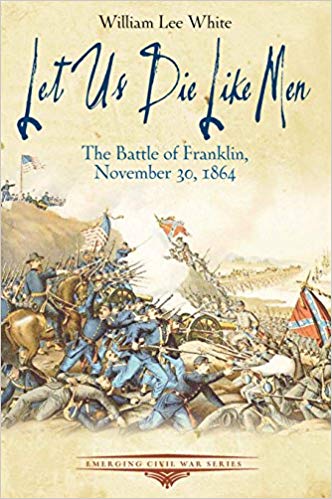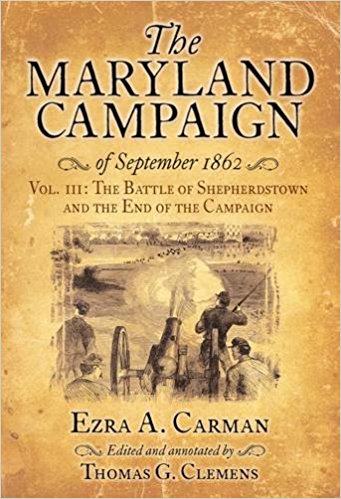Compelling and easy to read, William Lee White’s new account of the battle of Franklin, Let Us Die Like Men, is a worthy addition to Savas Beatie’s Emerging Civil War Series.
The author begins his account just after General William Tecumseh Sherman’s men break General John Bell Hood’s last supply line and force the evacuation of Atlanta. The first three chapters cover Confederate President Jefferson Davis’ visit to the Army of Tennessee, Hood’s march north, and the rebel general’s attempt to threaten Sherman’s supply lines. White devotes considerable space to the autumn clashes along the Western and Atlantic Railroad at Allatoona Pass, Resaca, and Dalton.
Unable to compel Sherman to attack, Hood trundled west into Alabama and changed his objective. He now sought to move north and defeat the federal forces in Tennessee. White discusses Hood’s changing plans and his disagreements with General P.G.T. Beauregard regarding them. After a review of the Army of Tennessee’s movement into Tennessee, White treats the fierce fighting at Spring Hill and General John Schofield’s narrow escape from Hood.
Next, the author covers the Union soldiers’ arrival at Franklin and Schofield’s preparations to move to Nashville. After detailing the Confederates’ arrival at Franklin, White uses the next five chapters to chronicle the murderous Battle of Franklin. He addresses Hood’s decision to attack the stout Union defenses head-on, as well as the fierce fighting that resulted in the federal troops turning back that assault. Hood’s army was thrashed; six Confederate generals were killed (and six more were wounded) in the fighting. White concludes with a brief overview of the battle at Nashville—the final death knell of the Army of Tennessee—and how ex-rebels ended the war in North Carolina.
Let Us Die Like Men is prolifically illustrated with portraits of commanders and modern-day pictures of areas contested during Hood’s campaign. He also includes many excellent maps, as well as valuable block quotes from primary sources. Of especial value to the intended audience of this work is a ten-page walking tour covering engagements from Allatoona Pass to Franklin. White includes helpful appendices on the Confederate artillery at Franklin and the regimental banners Hood’s army lost in the battle. He also addresses efforts since the Civil War to preserve the Franklin battlefield.
Although White hints at the controversy surrounding how Schofield’s soldiers slipped past Hood’s men at Spring Hill, he does not provide detail on this controversy—one that lasted for decades after the battle. This shortcoming aside, the author has succeeded in writing a book aimed at the larger public—one that should inspire readers to explore other some of the other excellent works on the Battle of Franklin.[1]
Thomas Mack is at work on his first book, the history of an Illinois regiment in the Western Theater.
[1]James Lee McDonough and Thomas L. Connelly, Five Tragic Hours: The Battle of Franklin (Knoxville: The University of Tennessee Press, 1983); Wiley Sword, The Confederacy’s Last Hurrah: Spring Hill, Franklin and Nashville (Lawrence: University Press of Kansas, 1992); Winston Groom, Shrouds of Glory: From Atlanta to Nashville: the Last Great Campaign of the Civil War (New York: Atlantic Monthly Press, 1995); Eric A. Jacobson and Richard A. Rupp, For Cause and for Country: A Study of the Affair at Spring Hill and the Battle of Franklin (Franklin, Tennessee: O’More Publishing, 2008); and James R. Knight, The Battle of Franklin: When the Devil Had Full Possession of the Earth(Charleston, SC: The History Press, 2009).





